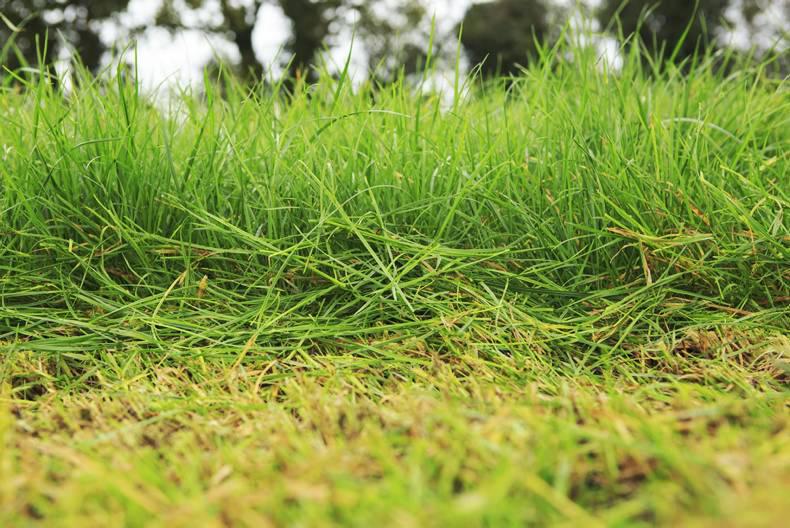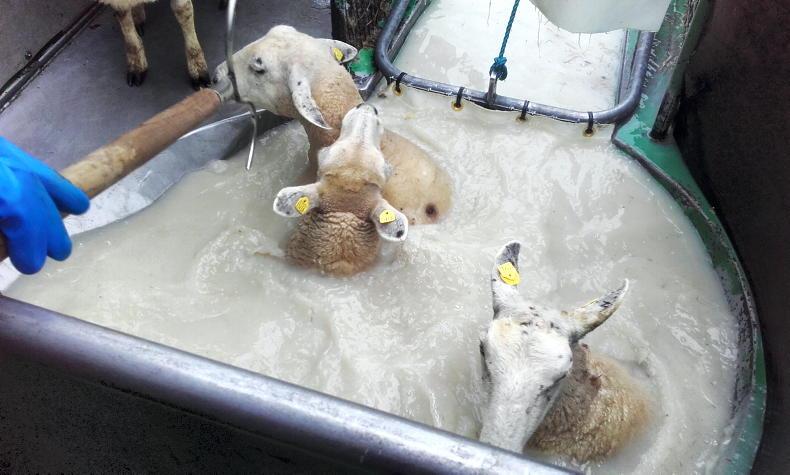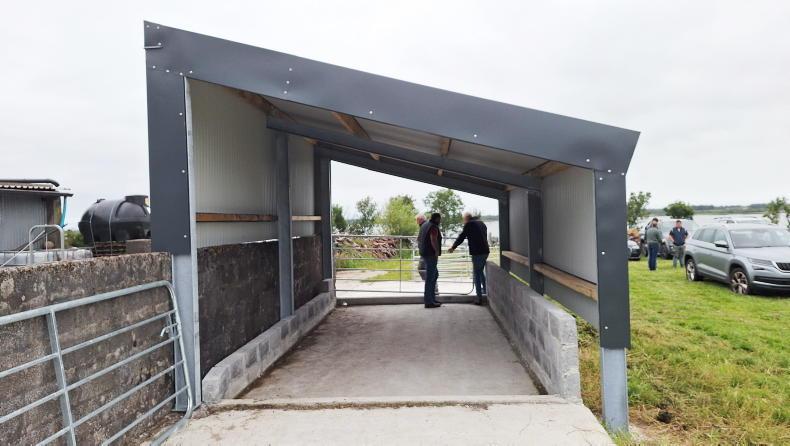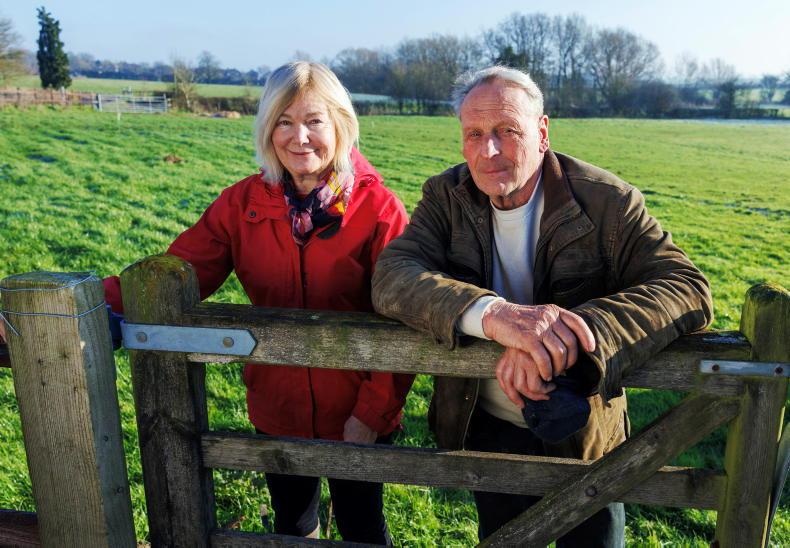Average grass growth rate across the BETTER beef farms remains largely unchanged from last week at 64kg DM/ha/day. However, heavy rain has led to difficult ground conditions in some parts of the country. Grass utilisation has been affected, with many struggling to hit target post-grazing residuals. On many of the wettest farms, cattle are being temporarily housed or will be housed in the coming days to prevent damage if conditions do not improve.
A lot of after-grass is also coming back into grazing rotations. It’s highly digestible and will have a low level of dry matter. Cattle intakes will be up and the consensus with most farmers is that stock are getting through after-grass at an alarming rate. Be wary of this when budgeting grass for a highly-stocked system. Lots of after-grass, coupled with poor utilisation and periods of depressed growth makes for the perfect storm. Though the weather forecast is relatively good, small pockets of the country will undoubtedly experience further rain. Have a plan in place just in case. Can silage be fed outdoors? Does your winter fodder budget allow for a reduction in necessary second-cut silage area? Or is housing the only option? If it is, house the strongest calves and cows and let calves creep back outdoors if possible. We should avoid housing forward beef stock – they really can’t afford the growth check that will come with an abrupt change from grass to silage at this point.
The three key profit drivers in beef production were outlined at BEEF 2016 – grass utilisation, stocking rate and maximising animal performance. The crowd was told how every extra tonne of grass utilised increased a farm’s net margin by €105.
The four steps to improving grass production and utilisation were outlined: 1. Take a soil test and act on results; 2. Establish grazing infrastructure; 3. Measure and manage grass supply; 4. Incorporate perennial ryegrass and clover into the swards.
At the grassland stand, Pearse Kelly reminded patrons that 90% of soil tests in Ireland show deficiencies in fertility. He said that correcting pH (lime) alone increased grass growth by 10%. See the video of Pearse on Twitter @fjbeef.
Donal Scully
Co Limerick
Farming system: Suckler to finish
Land type Dry
Growth rate (kg DM/ha/day) -
Average farm cover (kg DM/ha) -
Grass supplies are plentiful at the minute. On my reseeds, grass quality is good and growth rates are high. I can definitely see the difference in production compared to my old pastures.
Bulls are still at grass, with no meal being fed currently. I plan to introduce meal at grass over the next few weeks before housing in late summer with a planned finishing date of Nov/Dec. They are gaining 1.6kg/day at grass currently. There are 70 heifers running on the out-farm at present, 40 of which have five stars on the maternal index. I plan to bull these with the intention of selling some in-calf heifers next year. Calving is going well, with the first calves dropping from my new Charlaois bull. I have 36 cows calved in the last three weeks with 38 calves at foot. Bull calves are weighing around 50kg at birth and heifer calves weighing just over 40kg. My Angus calves from the heifers are weighing around 38kg at birth.
Niall Patterson
Co Leitrim
System Suckler to weanling
Land type Very heavy
Growth rate (kg DM/ha/day) -
Average farm cover (kg DM/ha) -
Grass growth has noticeably slowed. The weather has been a mixed bag here in recent weeks and my land doesn’t respond well to lots of moisture. At the moment, the ground is very soft. So much so, that I had to house 15 suckler cows and calves last Saturday. They were running on reseeded ground and I couldn’t afford to damage it. They’re eating bales that we took out as surplus earlier in the grazing season. Hopefully their move indoors will be a shortlived one.
Two paddocks that are too strong for grazing have been skipped and I hope to cut and bale them when ground conditions improve. There’s five acres in it and we’ll get around 20 bales – I expect the silage quality to be excellent.
The rest of my cows are spread out on rougher ground. The stock bulls were pulled in ten days ago. I haven’t seen any activity since. We’ll scan the herd in ten days’ time – hopefully the numbers are good.
Chris McCarthy
Co Westmeath
System Suckler to weanling
Land type Dry
Growth rate (kg DM/ha/day) 69
Average farm cover 1,059
While my growth and supply figures are good, the current grass situation is a frustrating one. We had torrential rain over the weekend and it has hampered grass utilisation. I can’t get paddocks grazed out and there is some damage being done. I target 4cm of a post-grazing height – we’re doing well to hit 6cm this week. The cattle are unsettled too.
With the high grass growth rates earlier this season, I lightened off on my N application. Hindsight is a great thing, but I fear I might regret this move if the weather doesn’t improve in the near future. Having said all that, sward quality is good and leafy – it’s the little silver lining that comes with a tightening of grass supply. But if things don’t pick up I’ll be feeding bales soon.
Stock bulls came out on 15 June and I’ll scan cows and get calves dosed and weighed in a fortnight’s time in one day’s work. Given my off-farm work, getting the big jobs streamlined like this is important.
Billy Glasheen
Co Tipperary
Farming system Store to beef
Land type Dry/heavy
Growth rate (kg DM/ha) 73
Average farm cover (kg DM/ha) 983
Growth here is good and I have around six acres to come out when the weather allows. I hope for around 30 bales from it. It’s been a very good grass-growing season here so far, though it started late. According to my records, I’ve spread around 1.9 bags of urea per acre to date, which is not excessive by any means. I’m stocked quite highly at 3.51 LU/ha, but this will begin to come down from now on as I kill cattle. I just can’t see the logic in replacing them given store prices – I’m happy to sit back and keep making bales. I began slaughtering cattle last week, straight from grass. My first load averaged 625kg of liveweight at slaughter and killed out well, coming in at 325kg carcase weight. These were all Angus/Hereford types.
Grass cattle have grown at a rate of 1.05kg daily since mid-April, which is good. Dung samples collected a few weeks ago signalled that some of the cattle had rumen fluke. Though their performance was only very-slightly back, I dosed them at weighing.
Grass+ dairy: another week of high growth ratesGrass+ dairy: another week of high growth rates










SHARING OPTIONS